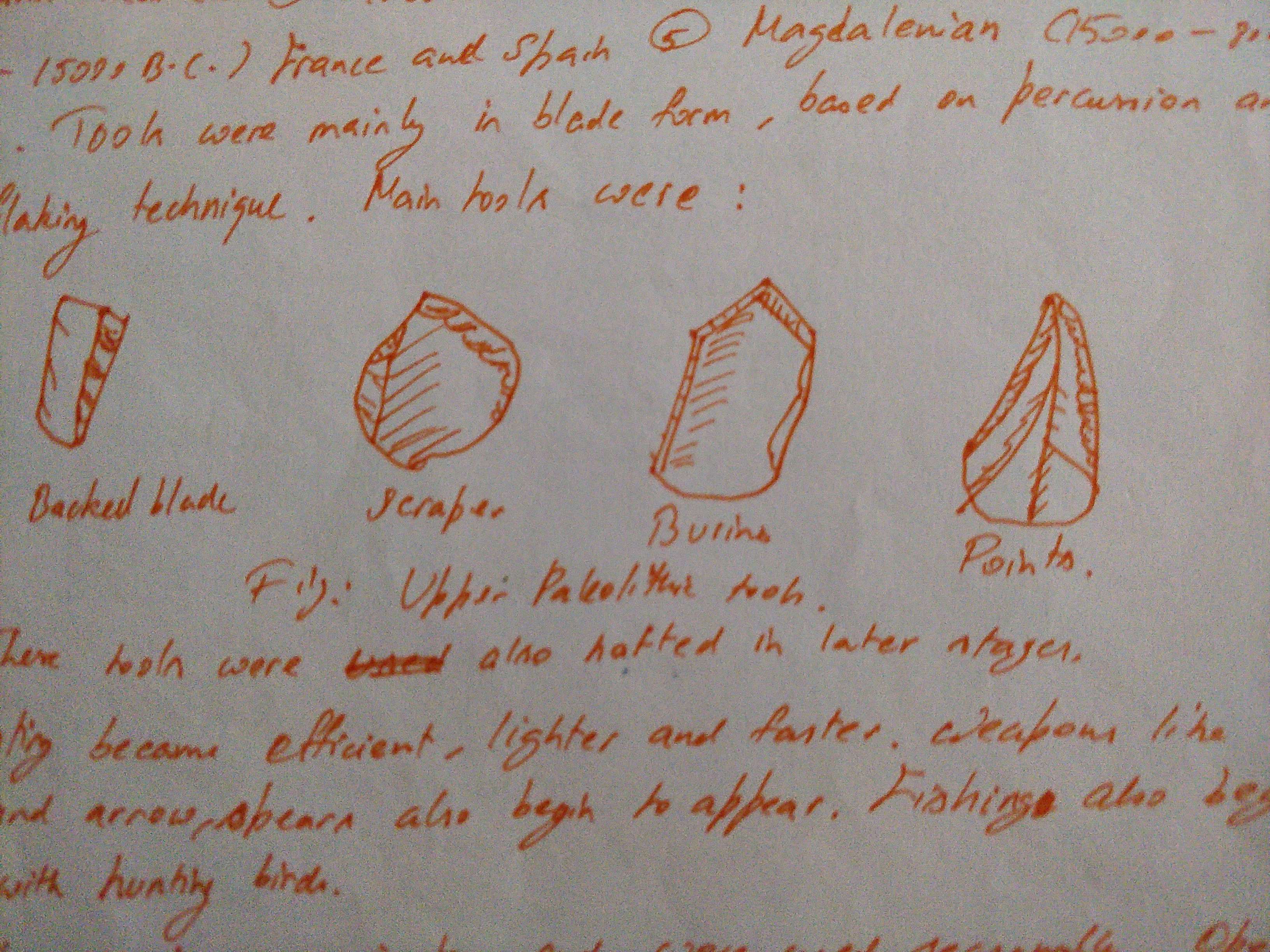Upper paleolithic 2-2

Later stone age in Africa. Between 40,000 and 10000 years ago.
Climate. humans in habitat tropical, subtropical, temperate, desert and after climates. Spread to Australia and America. Middle and late wurm glacial period. Mousterian pluvial period. Last ice age. Pleistocene megafauna ends - Mammoth rhinoceros and giant deers.
Associated with Homo sapiens sapiens and some last populations of neanderthals. Denisovana.
Technology. Blade Technology, elongated flakes by September aur indirect percussion technique. Scrapers burins and backed knives. Microlithic Technology seen during later stone age of Africa and Central and eastern Asia.
Non lithic tools. Bone, and colour and ivory created borers needles and points. Invention of bow and arrow, spheres and tiny replaceable blades.
Cultures
Europe. Perigordian . Western Europe art and bone tools. Blunted Sharp borders of large tools.
Aurignacian. Parallel to above but didn't plant their blades.
Solutrean. paper thin leaf points with pressure flaking.
Magdolian. Bone tools preferred. Azillion tradition developed microlith tools.
Solutrian of Spain and France.
Paleo Indian in the new world. - Clovis culture.
Angara culture - Asia
Sites. CRO magnon and Solutre in France. Altamira in Spain. Zhoukoudian China. Mumba cave Tanzania. Lake mungo Australia. Blackwater draw New Mexico.
India. Bhimbetka - flake technology and bone tools. Chintamani gavy - 90% bone tools Kurnool Andhra Pradesh.
Architecture. Sites with hearths and widespread use of fire. Dense concentration largest population and regular habitation of sides.
Culture. Symbolic art. Representation of animals, humans and abstract geometric patterns. Paintings, carvings, drawing, modelling. pendants and beads made of shell bone tooth and stone. Creative explosion. Ridges and which one symbolism possible. Bhimbetka cave paintings and Lascaux France.
Evidence of trade and relatively sedentary lifestyle.mellars 1994.
Hunting gathering lifestyle with fisheries and band organisation.
Paintings show lifestyle of hunting gathering, dance celebrations. Venus figurines.
The burials are more common and elaborate. Grave goods, jewellery and artefacts.